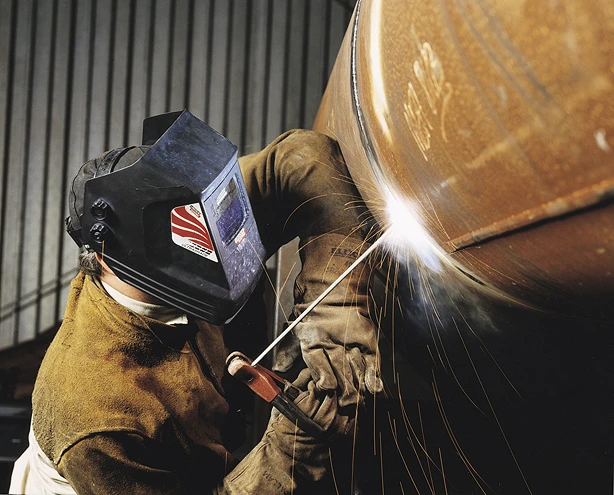The Ultimate Guide to Welding WPS Procedures: A Thorough Review for Welders
In the intricate globe of welding, Welding Procedure Specifications (WPS) offer as the foundation of making certain top quality, consistency, and safety in welding operations. Recognizing the nuances of creating, executing, and keeping track of WPS treatments is crucial for welders seeking to boost their craft and satisfy sector criteria. As we explore the different components of a WPS and explore the ins and outs of qualification and qualification, we will reveal the vital function these procedures play in the realm of welding. Let's get started on a trip to untangle the complexities and relevance of WPS treatments in welding methods.
Value of WPS Procedures
Understanding the value of Welding Procedure Requirements (WPS) treatments is vital for ensuring the top quality and integrity of welded frameworks. WPS treatments offer as a roadmap for welders, laying out the required actions, parameters, and materials required to attain a sound weld. By adhering to WPS guidelines, welders can ensure uniformity in their work, causing reputable and structurally audio welds.
One of the key factors why WPS procedures are vital is their function in keeping weld high quality and integrity. Adhering to the defined welding criteria and strategies laid out in the WPS helps prevent problems such as porosity, breaking, or incomplete blend, which can compromise the strength and toughness of the weld. In addition, WPS treatments are crucial for ensuring conformity with market requirements and codes. By complying with recognized WPS standards, welders can show that their work satisfies the needed needs for safety and high quality, providing guarantee to customers, examiners, and regulative bodies. Fundamentally, the importance of WPS treatments can not be overstated, as they are fundamental to attaining regular, premium welds that meet sector standards and specifications.

Parts of a WPS
A Welding Procedure Requirements (WPS) generally comprises vital elements that detail the particular requirements for performing a weld, guaranteeing consistency and top quality in the welding process. The crucial elements of a WPS consist of vital variables such as base steels, filler steels, interpass and preheat temperature levels, welding processes, shielding gases, welding settings, and post-weld warmth therapy requirements.
Base metals refer to the materials being signed up with, while filler metals are utilized to fill the space between the base steels throughout welding. Preheat and interpass temperature levels are vital for managing the warmth input and avoiding concerns like splitting or distortion. The welding process describes the certain technique to be utilized, whether it's gas steel arc welding (GMAW), protected steel arc welding (SMAW), or an additional approach. Protecting gases shield the weld swimming pool from climatic contamination. Welding settings specify the alignments in which welding can be carried out. Post-weld warmth therapy might be necessary to soothe stress and anxieties and improve the weld's properties. top article A complete understanding of these parts is crucial for creating a extensive and effective WPS.

Certification and Accreditation
Having developed the vital elements of a Welding Procedure Specification (WPS), the focus currently shifts towards the critical aspects of qualification and accreditation in welding methods.

Certification, on the various other hand, is the official acknowledgment of a welder's credentials by a pertinent certification body or organization. Welding qualifications are usually based on the particular welding processes, materials, and placements a welder is qualified to collaborate with. Holding a legitimate welding certification shows that a welder satisfies industry criteria and is experienced to carry out welding tasks to the called for requirements.
Producing a WPS
To establish a Welding Procedure Specification (WPS) that fulfills industry requirements, mindful consideration of welding processes, materials, and operational criteria is important. The very first step in creating a WPS is to identify the welding process to be used, such as gas metal arc welding (GMAW) or shielded steel arc welding (SMAW)

Executing and Keeping Track Of WPS
Upon wrapping up the detailed Welding Procedure Requirements (WPS) that thoroughly details welding procedures, materials, functional parameters, and top quality assurance actions, the focus changes to efficiently applying and keeping track of the well-known procedures. Execution includes making certain that all welders included in the job are acquainted with the WPS and follow it carefully throughout the welding process. Efficient execution and tracking of the WPS are critical for making sure the integrity, stamina, and safety and security of the welded joints, eventually adding to the overall success of the welding job.
Verdict
In conclusion, understanding and adhering to Welding Treatment Specifications (WPS) is critical for welders to make sure quality, uniformity, and safety and security in their work. By understanding the parts of a WPS, obtaining proper certifications and qualifications, creating comprehensive procedures, and carrying out and checking them properly, welders can enhance their skills and efficiency in welding methods. Following WPS treatments is crucial for producing top quality welds and meeting market requirements.
In the complex globe of welding, Welding Treatment Requirements (WPS) offer as the foundation of ensuring top quality, uniformity, and safety and security in welding procedures. Continued The welding procedure lays out the details strategy to be made use of, whether it's gas steel arc welding (GMAW), protected steel arc welding (SMAW), or one more technique.To develop a Welding Procedure Specification (WPS) that meets industry criteria, careful consideration of welding procedures, products, and functional specifications is vital. The very first step in creating a WPS is to recognize the welding procedure to be utilized, such as gas metal arc welding (GMAW) or protected metal arc welding (SMAW)Upon finalizing the comprehensive Welding Treatment Spec (WPS) that carefully details welding procedures, products, operational parameters, and top quality guarantee steps, the focus changes to efficiently implementing and keeping track of the well-known procedures.